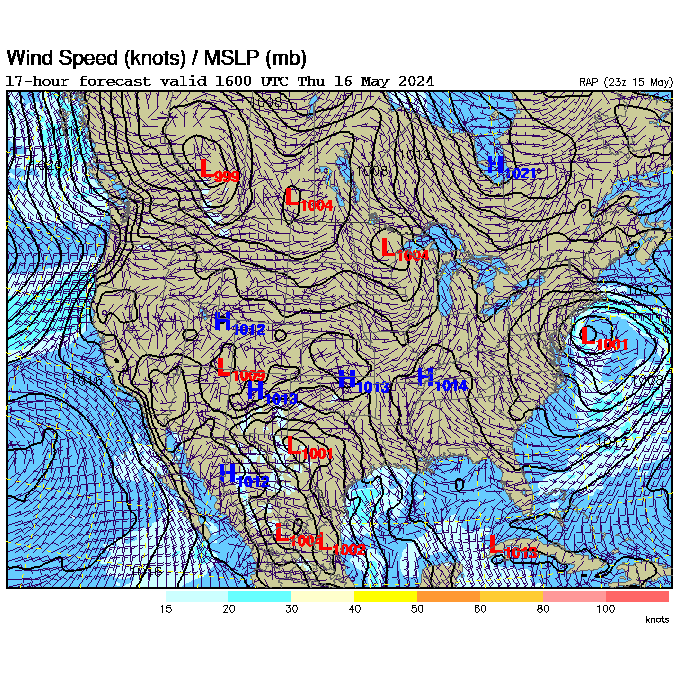What a day! The sightings poured in today now that rain wasn't so widespread and more pleasant conditions haven taken over. Highlights from the day include SAY'S PHOEBE, more WILSON'S
PHALAROPES, an early BLACKPOLL WARBLER, but all sorts of birds were moving/observed moving today as wind slowly shifted from N/NW to W and finally to W/SW, which is how they are currently flowing. This isn't as good as it gets for migration, but is certainly better than last night! We'll get to this in a moment, but first, here's a list of species that seemed to have been moving throughout Illinois with a few highlights: AMERICAN BITTERN, PALM, ORANGE-CROWNED, PINE, and BLACK-AND-WHITE WARBLERS, AMERICAN GOLDEN-PLOVER, AMERICAN WHITE PELICAN, GREEN HERON, PURPLE MARTIN, GRAY CATBIRD, BLUE-GRAY GNATCATCHER, CHIPPING SPARROW, BREWER'S BLACKBIRDS, YELLOW-HEADED BLACKBIRD, EASTERN WOOD-PEWEE, and much more. Birders' lists are starting to add up to higher numbers every day. For a great picture of birds in Illinois right now, here's my highlight report of the day (something I may start doing), from Jed Hertz: http://bit.ly/Y5C54f. Awesome report, Jed!
Illinois is currently experiencing very light migration in the dominantly westerly winds (see here: http://bit.ly/ZJd7mw), but as we saw today this doesn't necessarily mean that there will be an absence of migrants in the state. Keep an eye out for BLACK-CROWNED NIGHT-HERONS, GREEN HERONS, BROAD-WINGED HAWKS, SORAS, VIRGINIA RAILS, maybe SEMIPALMATED PLOVERS, PECTORAL, SPOTTED, LEAST, and SOLITARY SANDPIPER, DUNLIN, UPLAND SANDPIPERS, WILLET, FORSTER'S TERNS, COMMON NIGHTHAWKS, CHIMNEY SWIFT, RUBY-THROATED HUMMINGBIRDS, EASTERN WOOD-PEWEE, GREAT CRESTED FLYCATCHERS (and maybe even some Leasts), BLUE-HEADED, WHITE-EYED, WARBLING and RED-EYED VIREOS, HOUSE WRENS, MARSH WRENS, all the expected swallows, all the expected sparrows (especially take note of LE CONTE'S SPARROWS, GRASSHOPPER SPARROWS, and LARK SPARROWS), SWAINSONS'S, GRAY-CHEEKED, and WOOD THRUSHES, warblers including but not limited to BLUE-WINGED WARBLERS, ORANGE-CROWNED WARBLERS, PRAIRIE WARBLERS, BLACK-THROATED GREEN WARBLERS, PINE WARBLERS, YELLOW WARBLERS, HOODED WARBLERS, BLACK-AND-WHITE WARBLERS, NORTHERN PARULAS, LOUISIANA + NORTHERN WATERTHRUSHES, WORM-EATING WARBLERS, COMMON YELLOWTHROATS, SCARLET and SUMMER TANAGERS, ORCHARD and BALTIMORE ORIOLES, BREWER'S, RUSTY, and YELLOW-HEADED BLACKBIRDS, and possibly early DICKCISSELS or BOBOLINKS.
The Next 24 hours appear to be bringing continually deteriorating conditions for migration, with brief periods here and there that will be favorable for migration. The low pressure system passing over the north of us, the same one that is briefly giving the northern half of Illinois a southerly component to the winds, will continue to pass east, when the northerly winds of its backside will take over. In the southern half of Illinois, the primary influence will instead be from an incoming high pressure system, which will bring with it weaker west winds as it slowly passes by south of the state. Near the end of its influence on the state, it may bring weak southerly flow at the southern tip of the state, but this remains to be seen. **Here's the big news: Regardless of where you are, a lot of the forecasts for tomorrow show WNW winds in the morning and then SW winds in the evening; if this holds to be true, migration will be very similar tomorrow as it is tonight. But, it also appears that dominantly southerly winds will return on Friday, and obviously if this holds true we will have some very decent migration Friday night. Even more exciting, it is forecast that westerly influence on the winds will fade out Saturday afternoon, and at that point southerly winds will take over and remain dominant into next week. Get ready folks...this could be the period of warming average temps and massive migration that we're waiting for! Just a couple more days...
 |
| A 17 hour forecast for winds. Notice the place of the High and low pressure systems to our south and north, respectively, and their affects on the winds. |

No comments:
Post a Comment